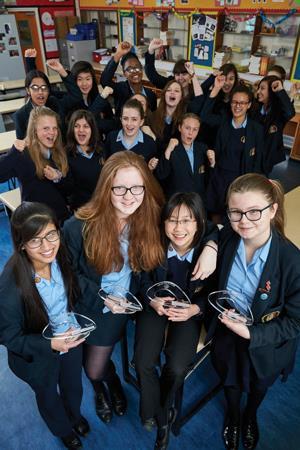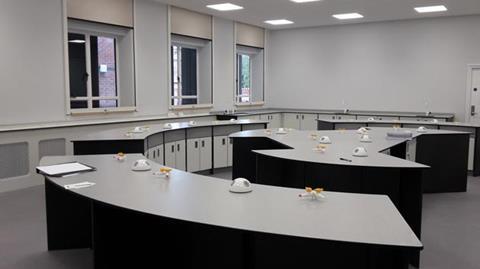Students in Birmingham see their designs become reality

The first chemistry lab to be researched, planned and designed entirely by students has been unveiled in Birmingham.
King Edward VI Camp Hill School for Girls, Year 11 pupils Simi Bhamra, Phoebe Thomas, Kate Pham and Chloe Taylor masterminded the new laboratory – leaving a unique legacy at the school.
The team saw their lab design installed at the school after winning ‘Lab of the Future’ – a nationwide competition that saw teams of students submit futuristic science lab designs.
The original prize for winning the competition was £20,000 of lab furniture to be installed at the school.
However, staff at King Edward’s were so impressed with the students’ design that they provided extra funding to install the full laboratory.
Phoebe, the team’s 16-year-old project manager said, ‘I don’t think we thought we would win until we had actually won. The whole time we were telling ourselves that it was going to be someone else and that it was a national competition and it was really unlikely we would win.
‘We were constantly checking the Twitter feed, seeing what was said and psyching ourselves up to lose, and then when we actually won it was just unbelievable!’
The girls beat off competition from across the country with an exceptionally well-thought-through 52-page document detailing end-user requirements, environmental factors, material, equipment, technology requirements and health and safety considerations.
The new laboratory incorporates a range of new features, including a horseshoe desk layout, which allows space for the teacher to circulate freely and easily, improving lines of communication.

Assistant headteacher Janet Rose, who teaches chemistry at the school, said: ‘Some of the labs were getting quite old, we had new labs in mind and wanted to slightly repurpose this room.
‘We thought, we can’t have this money for lab furniture and then not do anything with it so, yes, the school did find the extra money to actually be able to refit the lab and pay for the labour and the extra work that was needed to make it a reality.’









No comments yet